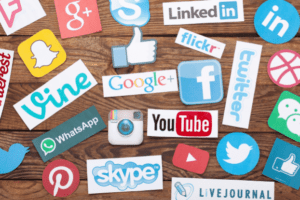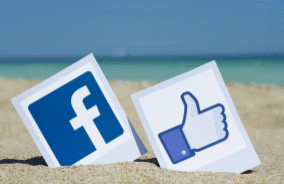Social media in Japan from a PR consultant perspective

Hello everyone! I am Donny Kimball and by day I am a PR consultant at Kyodo PR. Lately though more and more I have been moonlighting as an online influencer. For the past six months or so I have been actively putting a lot of work into developing a personal brand for myself on social media. Originally I had launched the channels following a lecture I did about how to storytell on social media and had planned to put out content in a similar vein. After realizing how saturated the “guru” market is however, I made a hard pivot towards something more substantial and I have been instead working to introduce some of Japan’s hidden destinations, another passion of mine.
Though I am still far from the best at social media, I think I have a decent grasp on the nature and nuances of each of the platforms. In an effort to quickly grow my audience, I have also developed a handful of powerful growth hacks that have allowed me to amass a following quite quickly and I’d like to share these with you here today. Given that I am essentially running these channels with the same resources a small business or solopreneur might have access to (read: close to nothing), I think can bring a lot of value on the subject of how to get started on social media.
While all platforms fit under the same social media umbrella, they each have their own unique language. As such, a piece of content that works on Twitter might be an utter flop on Facebook. There are real nuances that need to be observed if you’re looking to succeed or as Gary Vaynerchuk put it “Content is king but context is god.” In the remainder of this article, I will examine each of the popular channels in turn and detail what I have found to be the best practices for each. Given the language gap, many of the techniques I will introduce have yet to be documented in Japanese so BIJ readers will have first mover’s advantage for the time being.

Facebook:Towards the end of 2014, Facebook put out an announcement stating that users would start seeing even less of brand’s content starting in 2015. The social media behemoth had already been cutting the organic reach of fan pages for years prior to this announcement with ad agency Ogilvy reporting that only 2% of fans were seeing any particular piece of content back in 2014. Today this number is even less with average organic reach parsing pegging it at around a meager 0.1% of those following a page.
Though many marketers protested that they would begin to boycott the platform (with only a few actually following through), from the ashes of organic reach came the best ad product that the world has ever seen. Thus while Facebook is indeed now a “pay to play” platform, it need not necessarily be a negative. With proper audience setting, a page admin can achieve stalker-level niche targeting. There has just never in human history been a system that allows the delivery of a specific message to a set demographic like Facebook.
To illustrate this point, consider the following: for a client at Kyodo PR I have been able to target female students between the ages of 18-22 at a specific university of my choice that travel at least once per quarter and also like my client’s competitor. Of course the piece of content that I direct towards this demographic is also perfectly tailored to hit their emotional centers as well. This is a practice known as Facebook “dark posts” for those that are intrigued. There are already numerous articles about them online already so I won’t go into depth here. Google is your friend.
Despite this, while reaching the right people has never been easier, many marketers now struggle with actually amassing a following (especially for newer pages). With organic reach so laughably low, it can be hard to reach the terminal velocity point where people are engaging with your content enough for growth. As such it is almost mandatory that you be also boosting your content against demographics that are most likely to be receptive. To the extent possible, commit to investing JPY 1,000 into each piece of content and be sure to take a look at the analytics and track works.
For those looking to growth there following a little faster however, I have uncovered a little known growth hack that can expedite the process when used in conjunction with smart boosting. Basically for any paid promotional content, page admins have the option to directly invite those who “Like” the content. This feature can be access by clicking on the part of the interface that shows the number of reactions.
I have found that around 5-10% of people will accept this invite to like the page. Though the initial boost is an investment, this additional option is a nice bonus way to be sure you get your money’s worth. Personally I think it is best to invite people as soon after the engage as possible as it can be easy to forget with all the clutter on Facebook. With just this tactic alone I have been able to grow my page to around 3,000 followers in half a year. Note that if you’re targeting Japanese users they might be less likely to engage initially but generally each “like” has more weight behind it than a western audience.

Twitter: Twitter is a tricky beast. The platform is in many ways currently flying with only one wing and risks becoming the next “My Space” if it doesn’t evolve soon. While Facebook realized that it had a noise problem and took steps to curb the stem the tides, Twitter instead let the firehose go leading to information overload. Because of this, it now is extremely hard for even those with millions of followers to get their message across on Twitter. That said, it is one of the only places on the internet where it is acceptable to jump into the conversations of random strangers and herein lies the platform’s true potential.
Putting out content and amassing a following on Twitter is important to develop credibility for a brand but the noisiness of the platform means that only a small fraction of people will ever see it. When it comes to growth, an app like Crowdfire can help you quickly amass a significant following by following the followers of people in your niche. I do this regularly and have been able to rocket up to over 11,000 followers in six months. In terms of content, Twitter is my testing lab. I basically use it as a place to try ideas and share thoughts or interesting articles that I come across.
That all said, the real magic of Twitter however comes not in the mass distribution of content but in scaling one-to-one relationships. Even in 2016 it is still pretty rare for a brand to directly banter with followers and this is especially true in Japan where most companies view social media as just another billboard to blast their message. By interacting individually with fans it is possible to create relationships that go beyond marketing spam. Nevertheless, one thing to keep in mind when dealing with Japanese Twitter users is that they often prefer anonymity online so while you can engage one-to-one it can be hard to know who is behind the mask.
Another often overlooked feature of Twitter is the search function. As the majority of exchanges happen out in the open, these conversations are able to be picked up by the internal search engine. With proper usage, you can get amazing insights and market research out of Twitter by simply observing what people are and are not talking about online. There are few other places where markets can observe their potential customers discussing relevant topics in the open like Twitter. Just be sure you don’t jump in their discussions and try to sell from the start. That’s a surefire way to make them NEVER buy from you again!

Instagram:If a brand could only be on one platform going into 2017, I would recommend that they be on Instagram. It is simply THE place to be in terms of both user attention and organic reach. Unlike it’s big cousin Facebook, Instagram is still a place where a newcomer can break in and carve out a niche for his or herself. Additionally, the platform continues to innovate and redefine itself in the face of challengers like Snapchat meaning that your investment will not soon go to waste. At least for now and the immediate future, Instagram is having a field day in the limelight.
The challenge of Instagram in a digital era however is that it is not really possible to link out to other locations (unless you pay). This means that you’ll need to employee and old school media mindset on Instagram in regards to building a brand. For quant-driven, analytic-loving math nerds, this can often create a scenario where it is hard to justify the ROI of their initiatives. Nevertheless, Instagram is currently the platform that commands the most attention and user engagement so it is worth investing even if metrics are hard to quantify.
While in the last year Instagram began offering paid promotions, one can amass an audience quite quickly without ever spending a yen. In fact I have been able to go from zero to over 11,000 followers in only half a year. As pointed out by this Bloomberg article, most of the successful influencers are using some sort of tool or bot to optimize growth. My strategy has involved posting content and then mass following people on accounts that have similar interest to whatever I just posted (up to 60 people per hour). If done properly, this can easily result in an additional 1,000 followers per week but you need to be weary of the 7,500 following cap.
While the strategy mentioned above is useful for getting an audience, proper hashtag use is key to making sure that the most people possible see your content. Many people these days are aware of hashtags but few utilize them to their fullest effect. Any post can have up to 30 hashtags indexed meaning that anything less is just suboptimal. Normally I will pick 20-25 big category hashtags (eg. #Tourism, #Travel) and the supplement it with 5-10 hashtags relevant to the piece of content (eg. #Tochigi, #Shrine). As adding many hashtags to a post can seem spammy, one tip I advocate is putting them in the comments immediately after posting to maintain the aesthetic nature of the post.

Linkedin: I must say Linkedin is the place that I spend the least time out of the platforms that I am active on. Simply put there are not that many users yet in Japan who have adopted the platform. Instead many Japanese-only speakers use Facebook as a western might use Linkedin to connect and discuss business. Nevertheless if you’re in the B2B space or recruiting and are looking to reach expats, there is no better place to be than Linkedin.
Much like Facebook, Linkedin’s backend targeting can be used to deliver hyper-focused messages tailored for specific audiences. Unfortunately I don’t have enough experience being a practitioner to offer much advice here since I play in a B2C space. In addition to the power of ads, Linkedin is very quickly becoming a place for B2B content play. It’s very easy to get awareness for any sort of article that you publish natively to Linkedin. If you’re looking to establish thought leadership in your niche and you’re dealing in English, this is something to consider. Make sure to also cross post natively to Medium.com for additional reach!
Personally I only really use Linkedin as an online resume and a place where I can play “social media guru who posts about social media ON social media.”

LINE & Snapchat: Most marketers think of LINE as a place where the majority of young Japanese can be found. While there is indeed some opportunities to be found, I personally believe that there are simply better ways of reaching audiences. The psychology of a user where they are on LINE is that of chatting with friends. While they may be receptive to brands and their content on places like Facebook and Instagram,
LINE is mainly used for one-on-one or group communication and therefore even good executions go counter to what the end users is trying to accomplish when the open the app.
Snapchat on the other hand has a lot of possibility for brands (especially personal ones) but suffers from the problem of not having a discovery feature that makes it easy for users to find you. What this means is that you’ll need to leverage other channels like Facebook or Twitter to amass a following. A simple hack you might employ is to use your Snapcode (pictured here) for your profile pic. If you can get enough people following and cater to a young demographic though, Snapchat can do wonders but be weary of Instagram’s push to cut it out of the market.
Lastly when it comes to newer platforms like Snapchat, there is usually a 1-2 year lag before things hit the critical mass point in Japan. If you pay attention to what’s going on in the Western social media landscape, you can exploit the early mover’s advantage and already have amassed a following by the time they are at scale. Sure you may have some false starts but it’s totally worth the easy audience in the initial land grab for attention.
This Post was written by Donny Kimball , Social Media consultant
